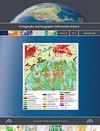Characteristics of augmented map research from a cartographic perspective
IF 2.4
3区 地球科学
Q1 GEOGRAPHY
Cartography and Geographic Information Science
Pub Date : 2022-04-22
DOI:10.1080/15230406.2022.2059571
引用次数: 2
Abstract
ABSTRACT “Why,” “what,” and “how” are basic questions to be answered in augmented map research as an intersecting direction. This study summarizes dynamic visual representations and true 3D interactions as characteristics of augmented maps from the cartographic perspective through analysis of the research progress in different disciplines. From secondary viewpoints of cognition and design, the augmented map cube is presented to establish the research framework in three directions: cognitive purposes, information dimensions, and interactive devices, in which map-based spatial cognition theory, augmented visualization, and interactive features are considered. The research evaluation is carried out to determine the reasonableness of the cube and then identify different research statuses in any one or two of the directions under the cube. Based on a literature search and classification, 30 typical studies were used for structural analysis to discover research trends and new directions that can be mined. The results show that the cube can be used to evaluate the coverage of an article or provide researchers with research trends and new possibilities. Our conclusions include but are not limited to the following: Research for retrieval purposes deserves attention, augmented visualization of specific individual elements is key to understanding maps, and interactive devices become more intangible.从制图角度看增强地图研究的特点
摘要“为什么”、“什么”和“如何”是增强地图研究中需要回答的基本问题。本研究通过分析不同学科的研究进展,从制图的角度总结了动态视觉表示和真实三维交互作为增强地图的特征。从认知和设计的次要角度,提出了增强地图立方体,从认知目的、信息维度和交互设备三个方向建立了研究框架,其中考虑了基于地图的空间认知理论、增强可视化和交互特征。进行研究评估是为了确定立方体的合理性,然后识别立方体下任意一个或两个方向上的不同研究状态。在文献检索和分类的基础上,使用30项典型研究进行结构分析,以发现研究趋势和可挖掘的新方向。结果表明,立方体可以用于评估文章的覆盖范围,也可以为研究人员提供研究趋势和新的可能性。我们的结论包括但不限于以下内容:出于检索目的的研究值得关注,特定单个元素的增强可视化是理解地图的关键,交互式设备变得更加无形。
本文章由计算机程序翻译,如有差异,请以英文原文为准。
求助全文
约1分钟内获得全文
求助全文
来源期刊
CiteScore
5.20
自引率
20.00%
发文量
23
期刊介绍:
Cartography and Geographic Information Science (CaGIS) is the official publication of the Cartography and Geographic Information Society (CaGIS), a member organization of the American Congress on Surveying and Mapping (ACSM). The Cartography and Geographic Information Society supports research, education, and practices that improve the understanding, creation, analysis, and use of maps and geographic information. The society serves as a forum for the exchange of original concepts, techniques, approaches, and experiences by those who design, implement, and use geospatial technologies through the publication of authoritative articles and international papers.

 求助内容:
求助内容: 应助结果提醒方式:
应助结果提醒方式:


